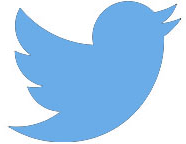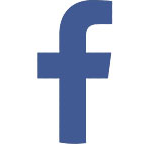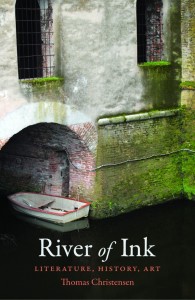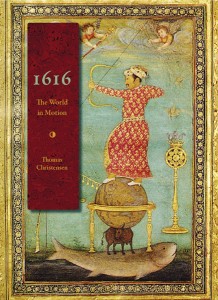Thomas Christensen
Thomas Christensen's previous books include New World/New Words: Recent Writing from the Americas, A Bilingual Anthology, The U.S.–Mexican War, and The Discovery of America and Other Myths as well as translations of books by such authors as Laura Esquivel, Carlos Fuentes, Julio Cortázar, Alejo Carpentier and Louis–Ferdinand Céline. He is director of publications at the Asian Art Museum in San Francisco and lives with his wife in Richmond, California.
Subscribe to our newsletter for news & events from Counterpoint Press.
Books
River of Ink
Literature, History, Art
With its title harkening back to the sack of Baghdad in 1258—when the Tigris ran black with the ink of books flung into the water by Mongol invaders—River of Ink is a collection of essays that range widely across time and cultures to illuminate the role of literature and art throughout history. Christensen draws from a panoply of subjects, from the writings of prehistoric Chinese cultures known only through archaeology to the heroic efforts of contemporary Afghanis to keep the legacy of their ancient culture alive under the barrage of endless war.Christensen's encyclopedic knowledge of world art and vast understanding of literature allows him to move easily from a discussion of the invention of moveable type in Korea, to Johannes Kepler's search for the harmony of the spheres, to the strange journey of an iron sculpture from Benin to the Louvre. Other essays cover the Popol Vuh of the Maya as exemplum of translation, the pioneering explorations of the early American naturalist John Bartram, and the balletic works of Louis–Ferdinand Céline.
It is Christensen's gift to see the world whole, to offer a wealth of connections vital for us as citizens of a rapidly globalizing world.
1616
The World in Motion
“A stunning overview of the nascent modern world through a thematic exploration of the year 1616 . . . with dozens of fabulous illustrations” (Publishers Weekly, starred review).The early 17th century was a time of enormous change in most regions of the world. The advent of maritime globalism accelerated the exchange of both goods and ideas, and the first international megacorporations started to emerge as economic powers. In Europe, the deaths of Shakespeare and Cervantes marked the end of an era in literature. The discoveries of Kepler and Galileo inspired new attitudes that would lead to an age of revolutions.
Great changes were also taking place in East Asia, where the last native Chinese dynasty was entering its final years and Japan was beginning its long period of warrior rule. Artists there were rethinking their connections to ancient traditions and experimenting with new directions. Women everywhere were redefining their roles in family and society. Slave trading was relocating large numbers of people, while others were migrating in search of new opportunities. The first tourists, traveling not for trade or exploration but for personal fulfillment, were exploring this new globalized world.
Thomas Christensen illuminates this extravagant age by focusing on a single riotous year. Woven with color images and artwork from the period, 1616 tells the surprising tales of the men and women who set the world on its tumultuous course toward modernity.

Catapult | Counterpoint | Soft Skull
20 Jay Street #704
Brooklyn, NY 11201
646.926.0805 | contact@catapult.co






